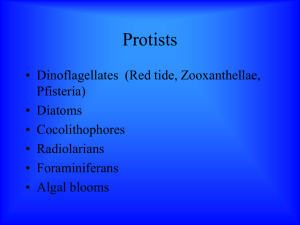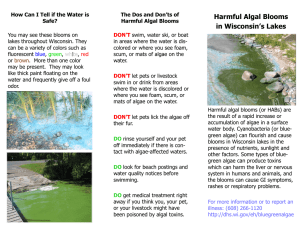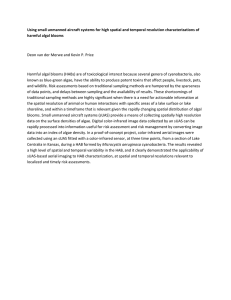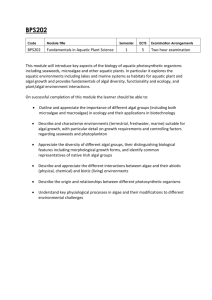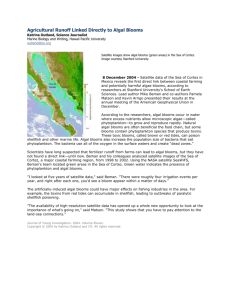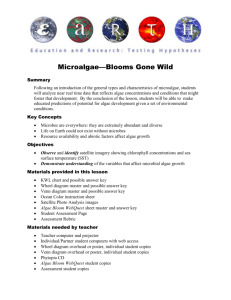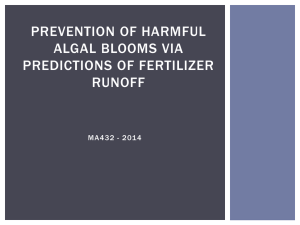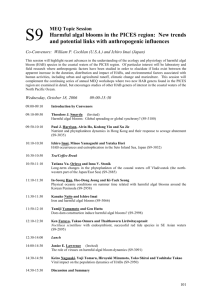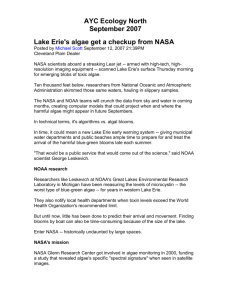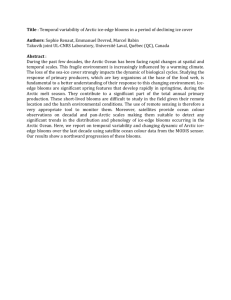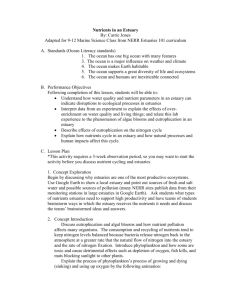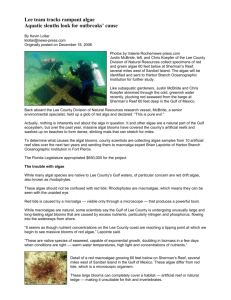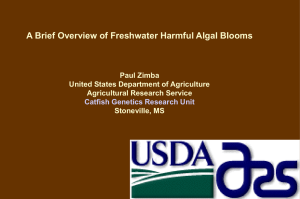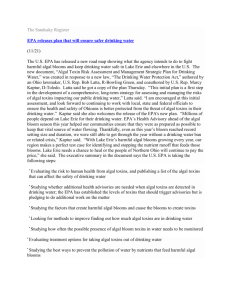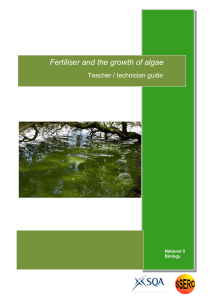Algal bloom
advertisement
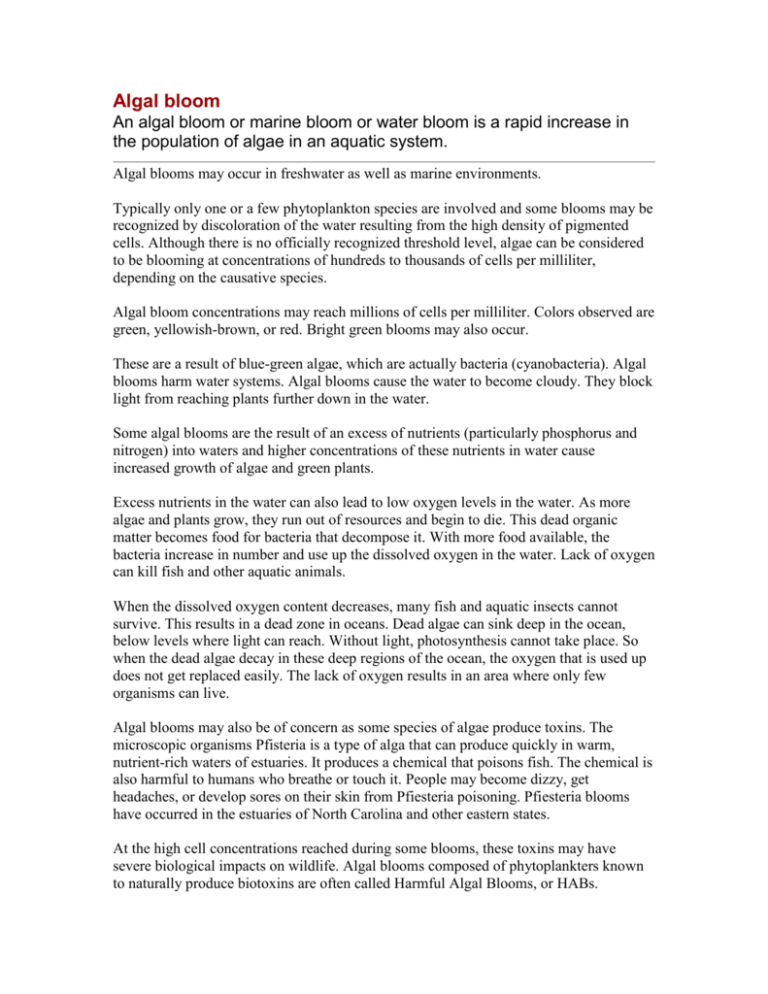
Algal bloom An algal bloom or marine bloom or water bloom is a rapid increase in the population of algae in an aquatic system. Algal blooms may occur in freshwater as well as marine environments. Typically only one or a few phytoplankton species are involved and some blooms may be recognized by discoloration of the water resulting from the high density of pigmented cells. Although there is no officially recognized threshold level, algae can be considered to be blooming at concentrations of hundreds to thousands of cells per milliliter, depending on the causative species. Algal bloom concentrations may reach millions of cells per milliliter. Colors observed are green, yellowish-brown, or red. Bright green blooms may also occur. These are a result of blue-green algae, which are actually bacteria (cyanobacteria). Algal blooms harm water systems. Algal blooms cause the water to become cloudy. They block light from reaching plants further down in the water. Some algal blooms are the result of an excess of nutrients (particularly phosphorus and nitrogen) into waters and higher concentrations of these nutrients in water cause increased growth of algae and green plants. Excess nutrients in the water can also lead to low oxygen levels in the water. As more algae and plants grow, they run out of resources and begin to die. This dead organic matter becomes food for bacteria that decompose it. With more food available, the bacteria increase in number and use up the dissolved oxygen in the water. Lack of oxygen can kill fish and other aquatic animals. When the dissolved oxygen content decreases, many fish and aquatic insects cannot survive. This results in a dead zone in oceans. Dead algae can sink deep in the ocean, below levels where light can reach. Without light, photosynthesis cannot take place. So when the dead algae decay in these deep regions of the ocean, the oxygen that is used up does not get replaced easily. The lack of oxygen results in an area where only few organisms can live. Algal blooms may also be of concern as some species of algae produce toxins. The microscopic organisms Pfisteria is a type of alga that can produce quickly in warm, nutrient-rich waters of estuaries. It produces a chemical that poisons fish. The chemical is also harmful to humans who breathe or touch it. People may become dizzy, get headaches, or develop sores on their skin from Pfiesteria poisoning. Pfiesteria blooms have occurred in the estuaries of North Carolina and other eastern states. At the high cell concentrations reached during some blooms, these toxins may have severe biological impacts on wildlife. Algal blooms composed of phytoplankters known to naturally produce biotoxins are often called Harmful Algal Blooms, or HABs.
